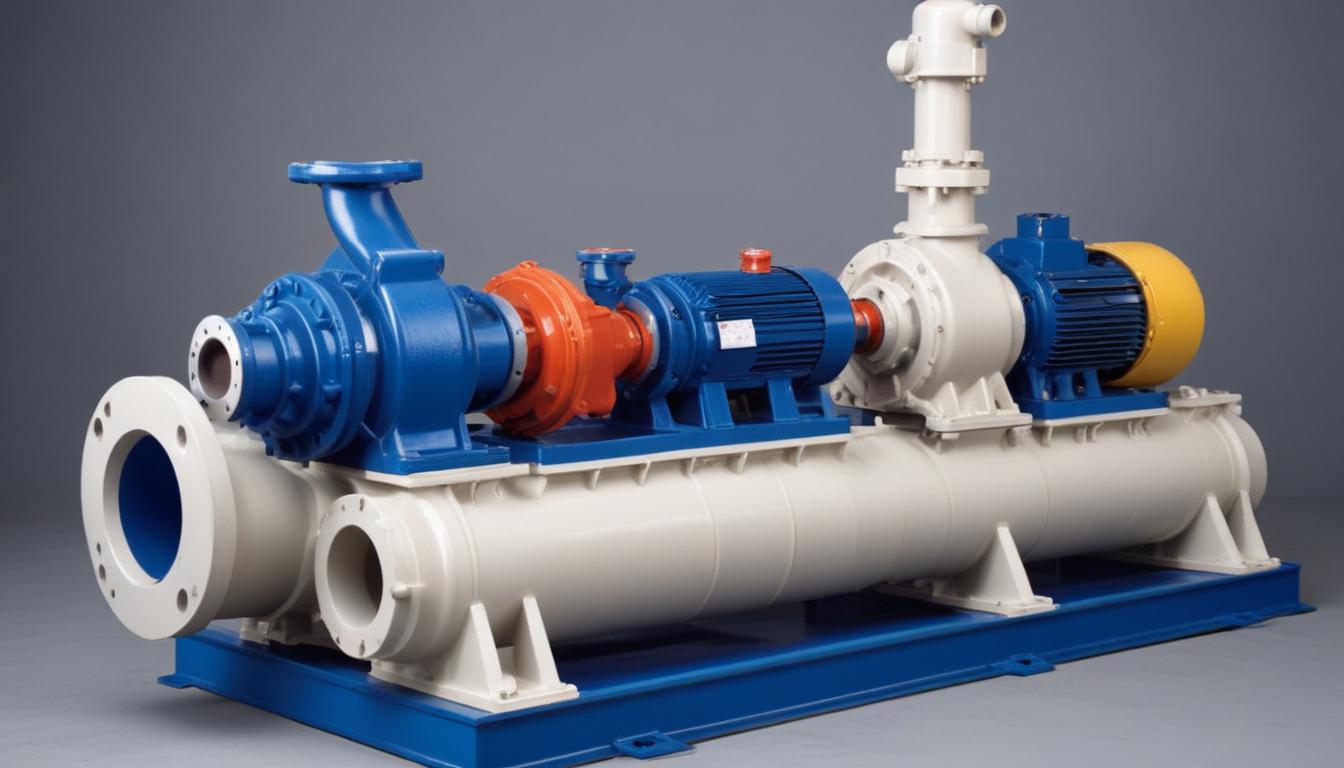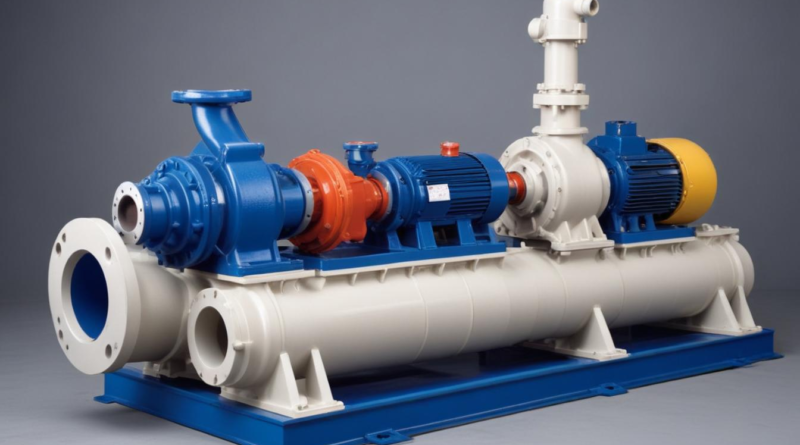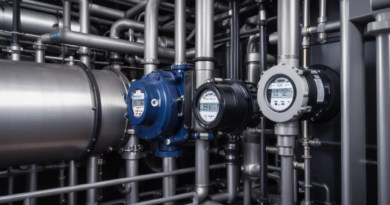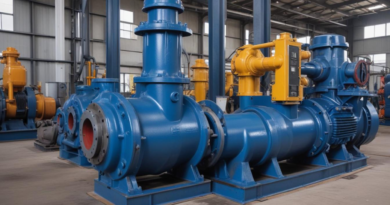how to select a pump based on total dynamic head
Total Dynamic Head (TDH) is a critical parameter in determining the performance and suitability of a pump for a specific application. It represents the total amount of energy required to move a fluid from the source to the destination, overcoming both the static lift and the friction losses within the system. Calculating TDH accurately ensures efficient pump selection, optimizing both performance and energy consumption.
Total Dynamic Head comprises three primary components:
- Static Head: The vertical distance the fluid must be lifted from the source to the discharge point.
- Friction Losses: Energy losses due to friction within the piping, fittings, valves, and other components of the system.
- Pressure Head: The pressure required at the discharge point to achieve the desired flow conditions.
Understanding these components is essential for accurate pump selection. To visualize the components of TDH, consider the following table:
| Component | Description |
|---|---|
| Static Head | Vertical distance fluid must be lifted. |
| Friction Losses | Energy lost due to friction in the system. |
| Pressure Head | Pressure needed at discharge point. |
Accurate assessment of TDH involves evaluating the specific criteria of the system, including the height difference, pipe length and diameter, flow rate, and the number of fittings and bends. These factors collectively influence the overall head requirements and, consequently, the optimal pump selection. Understanding and calculating the Total Dynamic Head ensures that the chosen pump meets the application’s demands, providing reliable and efficient operation.
calculating total dynamic head
Calculating the Total Dynamic Head involves a systematic approach to quantify the energy required for effective pump selection. The process encompasses three main steps: determining the static head, estimating friction losses, and accounting for pressure head. Each component plays a vital role in ensuring the pump meets the specific criteria of the application.
- Determining Static Head:
- Measure the vertical distance between the water source and the discharge point.
- Consider any additional height required for system elevation.
- Sum these measurements to obtain the total static head.
- Estimating Friction Losses:
- Identify the type and length of piping used in the system.
- Count the number of fittings, valves, and bends that contribute to friction.
- Utilize the Darcy-Weisbach or Hazen-Williams equation to calculate the friction loss based on pipe material, diameter, flow rate, and velocity.
- Aggregate the friction losses from all segments to determine the total friction head.
- Accounting for Pressure Head:
- Determine the required pressure at the discharge point to achieve the desired flow conditions.
- Convert this pressure into head using the formula: Pressure Head (ft) = (Pressure (psi) × 2.31) / Specific Gravity.
- Add this value to the static and friction heads to obtain the pressure head component of TDH.
To streamline the calculation process, consider the following table, which outlines the necessary formulas and factors involved:
| Component | Calculation Method | Key Factors |
|---|---|---|
| Static Head | Vertical distance (ft) between source and discharge | Elevation difference, additional lift requirements |
| Friction Losses | Using Darcy-Weisbach or Hazen-Williams equations | Pipe length, diameter, flow rate, roughness factor |
| Pressure Head | Pressure (psi) × 2.31 / Specific Gravity | Desired discharge pressure, fluid properties |
By meticulously calculating each component, you can accurately determine the Total Dynamic Head required for your system. This comprehensive understanding ensures that the selected pump will operate efficiently, meeting both performance and energy consumption criteria.
factors affecting total dynamic head
Several key elements influence the Total Dynamic Head, directly impacting the efficiency and effectiveness of pump selection. Understanding these factors is essential to ensure that the pump meets the specific criteria of your system. The primary factors include:
- Elevation Difference (Static Head):
- Vertical Distance: The height the fluid must be lifted from the source to the discharge point significantly affects the static head component of TDH.
- Terrain Variations: Uneven terrain can introduce additional elevation changes, increasing the overall static head.
- Friction Losses:
- Pipe Length and Diameter: Longer pipes and smaller diameters increase friction losses, thereby raising the TDH.
- Pipe Material: The roughness of the pipe’s interior surface affects the friction factor; rougher materials lead to higher friction losses.
- Flow Rate: Higher flow rates result in increased velocity, which in turn elevates friction losses within the system.
- Number of Fittings and Valves: Each additional fitting, valve, or bend introduces more points of resistance, contributing to greater friction losses.
- Fluid Properties:
- Viscosity: More viscous fluids experience higher resistance to flow, increasing the required TDH.
- Temperature: Temperature changes can alter fluid viscosity and density, impacting both static and dynamic head components.
- System Configuration:
- Pump Location: The placement of the pump relative to the fluid source and discharge point can influence the static and friction components of TDH.
- Pipe Layout: Efficient pipe routing minimizes unnecessary bends and fittings, reducing friction losses.
- Environmental Factors:
- Altitude: Higher altitudes can affect atmospheric pressure, which may influence the pressure head required.
- External Temperature: Ambient temperature variations can impact fluid properties and system performance.
To better visualize how these factors interplay and contribute to the Total Dynamic Head, consider the following table:
| Factor | Impact on TDH | Considerations for Pump Selection |
|---|---|---|
| Elevation Difference | Increases static head with greater vertical lift requirements. | Select pumps capable of handling the necessary lift without excessive energy consumption. |
| Pipe Length and Diameter | Longer and narrower pipes elevate friction losses. | Choose pumps that can maintain flow rates despite higher friction losses. |
| Flow Rate | Higher flow rates lead to increased friction losses and potentially higher pressure head requirements. | Ensure the pump can deliver the desired flow rate efficiently at the calculated TDH. |
| Pipe Material | Rougher materials contribute to greater friction losses. | Consider smoother pipe materials or adjust pump specifications to compensate. |
| Number of Fittings and Valves | More fittings and valves increase resistance and friction losses. | Select pumps with sufficient capacity to overcome additional head losses. |
| Fluid Properties | Viscous or temperature-sensitive fluids can alter head requirements. | Choose pumps designed to handle specific fluid characteristics effectively. |
| System Configuration | Pump placement and pipe layout affect both static and friction head. | Optimize system design to minimize unnecessary head requirements. |
| Altitude and Environmental Factors | Can influence pressure head and fluid behavior. | Adjust pump selection to account for environmental impacts on TDH. |
By meticulously analyzing these factors, you can accurately determine the Total Dynamic Head necessary for your application. This thorough understanding is crucial for selecting a pump that not only meets the operational criteria but also ensures long-term reliability and efficiency.
pump types and their applications
 When selecting a pump for a specific application, understanding the various pump types and their respective applications is essential. Each pump category offers unique features that make it suitable for particular conditions based on the system’s total dynamic head and other critical criteria. Below is an overview of the most common pump types, their characteristics, and typical use cases:
When selecting a pump for a specific application, understanding the various pump types and their respective applications is essential. Each pump category offers unique features that make it suitable for particular conditions based on the system’s total dynamic head and other critical criteria. Below is an overview of the most common pump types, their characteristics, and typical use cases:
- Centrifugal Pumps:
- Description: Utilize a rotating impeller to impart velocity to the fluid, converting kinetic energy into pressure.
- Applications: Ideal for low to medium total dynamic head scenarios such as water supply, irrigation, and HVAC systems.
- Advantages: Simple design, cost-effective, and easy to maintain.
- Positive Displacement Pumps:
- Description: Move fluid by trapping a fixed amount and forcing it through the discharge pipe, maintaining a consistent flow rate regardless of total dynamic head variations.
- Applications: Suitable for high-viscosity fluids, chemical dosing, and applications requiring precise flow control.
- Advantages: High efficiency with viscous liquids, self-priming, and capable of handling varied flow rates.
- Submersible Pumps:
- Description: Designed to operate while fully submerged in the fluid, eliminating issues related to priming and ensuring efficient performance underwater.
- Applications: Commonly used in wells, sump pits, sewage systems, and underwater construction sites.
- Advantages: Quiet operation, energy-efficient, and protection from environmental elements.
- Shaft-Mounted Pumps:
- Description: Feature the impeller attached directly to the drive shaft, allowing for compact designs and easy integration with motors.
- Applications: Suitable for applications requiring moderate flow rates and total dynamic head, such as firefighting systems and small industrial processes.
- Advantages: Simple construction, reliable performance, and ease of maintenance.
- Jet Pumps:
- Description: Use a jet of fluid to create a vacuum that draws the primary fluid into the pump, suitable for various depths.
- Applications: Often used in shallow wells, geothermal systems, and certain types of water treatment facilities.
- Advantages: Can handle sandy or dirty water, relatively simple mechanics, and cost-effective for specific uses.
- Diaphragm Pumps:
- Description: Use a flexible diaphragm to displace fluid, making them ideal for handling corrosive or abrasive substances.
- Applications: Chemical processing, pharmaceuticals, and wastewater treatment where leak prevention is critical.
- Advantages: Excellent for hazardous fluids, high precision in flow control, and minimal maintenance requirements.
To facilitate the selection process, the following table summarizes the key characteristics and ideal applications of each pump type:
| Pump Type | Characteristics | Ideal Applications | Suitable TDH Range |
|---|---|---|---|
| Centrifugal Pumps | High flow rates, low to medium head, simple design | Water supply, irrigation, HVAC systems | 10 – 300 ft |
| Positive Displacement Pumps | Consistent flow, handles high viscosity, precise control | Chemical dosing, viscous liquid transfer | 50 – 500 ft |
| Submersible Pumps | Operates underwater, energy-efficient, quiet | Wells, sewage systems | 20 – 400 ft |
| Shaft-Mounted Pumps | Compact, reliable, easy maintenance | Firefighting systems, small industries | 30 – 350 ft |
| Jet Pumps | Utilizes fluid jet for suction, good for shallow depths | Shallow wells, geothermal systems | 15 – 200 ft |
| Diaphragm Pumps | Handles corrosive/abrasive fluids, precise control | Chemical processing, pharmaceuticals | 40 – 450 ft |
When determining the most appropriate pump type, consider the following criteria:
- Total Dynamic Head: Ensure the pump can handle the system’s TDH requirements efficiently.
- Fluid Characteristics: Viscosity, corrosiveness, and presence of solids can influence pump choice.
- Flow Rate: Match the pump’s capacity with the desired flow rate to avoid underperformance or energy inefficiency.
- Installation Environment: Space constraints, submersion needs, and environmental conditions play a role in pump selection.
- Maintenance and Reliability: Assess the ease of maintenance and the expected lifespan of the pump type in the given application.
By thoroughly evaluating these pump types against your system’s specific criteria, you can make an informed decision that ensures optimal performance and longevity of your pumping solution.
selecting the appropriate pump
Selecting the appropriate pump involves a comprehensive evaluation of the system’s Total Dynamic Head alongside other critical criteria. The goal is to match the pump’s capabilities with the specific requirements of your application to ensure optimal performance, efficiency, and longevity. The following steps outline a systematic approach to making an informed pump selection:
- Determine System Requirements:
- Flow Rate: Identify the required flow rate in gallons per minute (GPM) or liters per second (L/s). This ensures the pump can deliver the necessary volume of fluid.
- Total Dynamic Head: Utilize the previously calculated TDH to understand the energy the pump must provide to overcome system resistance.
- Fluid Characteristics: Assess the viscosity, temperature, corrosiveness, and presence of solids in the fluid to select a pump compatible with these properties.
- Evaluate Pump Performance Curves:
- Review the pump manufacturer’s performance curves, which graphically represent the relationship between flow rate and head for different pump models.
- Ensure that the pump operates efficiently at the intersection point of your system’s flow rate and TDH on the performance curve.
- Consider the Best Efficiency Point (BEP) to maximize energy efficiency and minimize wear and tear.
- Consider Pump Type and Configuration:
- Refer to the previously discussed pump types and their suitability based on your system’s TDH and other criteria.
- Decide between vertical and horizontal pump configurations based on installation space and maintenance accessibility.
- Evaluate single-stage versus multi-stage pumps if higher heads are required.
- Assess Energy Efficiency:
- Select pumps with high efficiency ratings to reduce energy consumption and operational costs.
- Consider variable frequency drives (VFDs) if your application benefits from adjustable flow rates, enhancing energy savings.
- Determine Material Compatibility:
- Choose pump materials that resist corrosion and wear based on the fluid’s properties and the operating environment.
- Ensure seals and gaskets are compatible with the fluid to prevent leaks and extend pump life.
- Evaluate Reliability and Maintenance Requirements:
- Select pumps known for their reliability and ease of maintenance to minimize downtime.
- Consider the availability of spare parts and technical support from the manufacturer.
- Assess the maintenance schedule and requirements to ensure they align with your operational capabilities.
- Budget and Total Cost of Ownership:
- Factor in the initial purchase cost, installation expenses, and long-term operational costs.
- Consider energy consumption, maintenance, and potential downtime when evaluating the total cost of ownership.
To streamline the selection process, the following table outlines key considerations and corresponding actions:
| Consideration | Action | Impact on Pump Selection |
|---|---|---|
| Flow Rate | Identify required GPM or L/s | Ensures the pump can meet the system’s volume demands |
| Total Dynamic Head | Use calculated TDH | Matches pump’s energy provision with system’s resistance |
| Fluid Characteristics | Assess viscosity, temperature, and corrosiveness | Determines suitable pump type and materials |
| Performance Curves | Analyze flow vs. head graphs | Ensures efficient operation at required conditions |
| Energy Efficiency | Select high-efficiency models | Reduces operational costs and energy consumption |
| Material Compatibility | Choose appropriate materials | Prevents corrosion and extends pump lifespan |
| Reliability & Maintenance | Evaluate pump reliability and maintenance needs | Minimizes downtime and ensures continuous operation |
| Budget | Consider total cost of ownership | Balances upfront costs with long-term expenses |
In addition to these steps, it is essential to consult with pump manufacturers or suppliers to obtain detailed specifications and expert recommendations tailored to your specific application. Leveraging their expertise can help identify any unique criteria or system requirements that may influence the final pump selection.
Furthermore, conducting a site survey or system audit can provide valuable insights into the operational environment, potential installation challenges, and any constraints that might affect pump performance. This proactive approach ensures that all factors are considered, mitigating risks associated with pump selection and enhancing the overall efficiency of the pumping system.
By meticulously following these guidelines and thoroughly evaluating each aspect of your system’s requirements, you can confidently select a pump that not only meets the necessary Total Dynamic Head but also aligns with your operational criteria, ensuring reliable and efficient performance.




